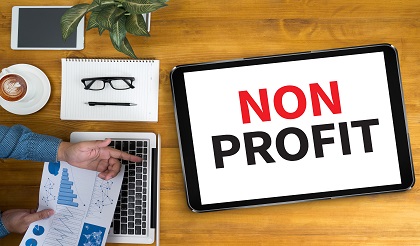
In the digital age, intellectual property (IP) is a critical asset for any organization, including nonprofits.
While nonprofits may not operate for profit, they rely on their brand, content, and other intellectual property to further their mission, build trust with their community, and distinguish themselves from other organizations.
Protecting these intangible assets is essential to maintaining credibility, increasing awareness, and ensuring that their work is not misused or exploited by others.
Nonprofits often create valuable content, such as educational materials, logos, research papers, fundraising campaigns, and online content, which need safeguarding.
Failure to adequately protect these assets can result in loss of control, unauthorized use, or even legal disputes.
This article will explore the key intellectual property considerations for nonprofits and how they can take steps to protect their brand and content effectively.
Understanding Intellectual Property for Nonprofits
Intellectual property refers to creations of the mind, including trademarks, copyrights, patents, and trade secrets, that are legally recognized and protected. For nonprofits, IP assets may include:
- Trademarks: Protecting your organization’s name, logo, slogans, and other brand identifiers.
- Copyrights: Protecting original content, such as educational materials, reports, videos, and websites.
- Patents: Protecting any unique inventions or processes developed by your organization, though this is less common for nonprofits.
- Trade Secrets: Protecting confidential information such as donor lists, proprietary methods, or internal strategies.
For nonprofits, understanding how to protect these assets is essential for building a strong identity, preventing misuse, and ensuring that the organization retains control over how its content and brand are used.
Safeguard Your Brand Identity With Trademark Protection
A nonprofit’s brand identity is often its most valuable asset. It represents the organization’s reputation, mission, and values.
Protecting the organization’s name, logo, and slogans through trademarks ensures that others cannot use them without permission or in ways that could damage the nonprofit’s reputation.
Here’s how nonprofits can protect their trademarks:
- Conduct a Trademark Search: Before using a new name or logo, nonprofits should conduct a thorough trademark search to ensure that it is not already in use by another organization. This prevents the risk of infringing on someone else’s trademark and avoids potential legal disputes.
- Register the Trademark: After confirming that a name or logo is unique, nonprofits should register it with the U.S. Patent and Trademark Office (USPTO). Registering the trademark provides legal protection, giving the organization exclusive rights to use the name or logo and the ability to take legal action against anyone who uses it without authorization.
- Monitor for Infringement: Trademark protection is not a one-time process. Nonprofits must actively monitor for unauthorized use of their brand. If another organization or individual uses a similar name or logo that could cause confusion, the nonprofit may need to take legal action to protect its brand.
Without proper trademark protection, nonprofits risk losing control over their brand, which could lead to public confusion or harm to the organization’s reputation.
Secure Your Content with Copyright Protection
Nonprofits often produce original content that is important to their mission, such as educational materials, research reports, publications, and marketing campaigns.
This content needs to be protected through copyright law to prevent unauthorized copying, distribution, or alteration.
Key considerations for nonprofits regarding copyright include:
- Automatic Copyright Protection: Copyright protection is automatically granted when original content is created and fixed in a tangible form, such as a written document, a video, or a digital file. This means that as soon as a nonprofit creates original content, it is automatically copyrighted. However, registering the copyright with the U.S. Copyright Office provides additional legal benefits and makes it easier to enforce copyright protections in court.
- Licensing and Permissions: Nonprofits often want their content to be shared and distributed to further their mission. However, it’s important to establish clear guidelines on how others can use the content. This can be done through licensing agreements, which grant permission for specific uses while maintaining control over the content.
- Fair Use Considerations: Nonprofits may also want to use copyrighted content created by others. In some cases, this may be covered under “fair use” if the content is used for educational, non-commercial, or transformative purposes. However, fair use is a complex area of law, and nonprofits should seek legal advice to ensure that their use of copyrighted material does not result in infringement claims.
Protecting Online Content
As more nonprofits rely on digital platforms to reach their audiences, protecting online content is critical. Websites, social media, blogs, and other digital resources are often the most visible parts of a nonprofit’s work.
Ensuring that this content is properly protected helps prevent theft, misrepresentation, or misuse.
- Website Terms of Use and Privacy Policies: Nonprofits should implement terms of use and privacy policies on their websites to outline how content may be used by visitors and how the organization will protect personal information. These policies help set clear guidelines for how the public can interact with the organization’s content online.
- Digital Copyright Registration: Nonprofits should consider registering their digital content, such as videos, graphics, and written works, with the U.S. Copyright Office to strengthen their ability to take legal action against online infringement.
- Watermarking and Attribution: To deter unauthorized use of images, videos, or infographics, nonprofits can use watermarks or other forms of attribution that credit the organization as the original creator. This not only protects the content but also ensures that the organization receives proper recognition for its work.
Managing Intellectual Property with Volunteers and Employees
Nonprofits often rely on the work of volunteers, staff, and contractors to create content, design logos, or develop new programs. It’s essential to establish clear agreements regarding who owns the intellectual property created in these relationships.
- Work-for-Hire Agreements: If an employee or contractor creates content on behalf of the nonprofit, the organization should have a clear work-for-hire agreement in place that states the nonprofit owns the intellectual property created during the course of their work. Without such an agreement, the creator may retain ownership of the content, even if it was developed for the nonprofit.
- Volunteer IP Agreements: Volunteers often contribute to creating content or ideas that may have significant value to the organization. It’s a good practice to have written agreements with volunteers stating that any intellectual property they create in the course of their volunteer work is owned by the nonprofit.
Avoiding Infringement of Others’ Intellectual Property
While nonprofits need to protect their own IP, they must also ensure they are not infringing on others’ intellectual property rights. This includes using images, videos, music, or other content created by others without permission. Nonprofits should:
- Obtain Proper Licensing: Ensure that any third-party content used in fundraising materials, presentations, or publications is properly licensed or used with permission.
- Credit Creators: When using content from other creators under a license or with permission, always provide proper attribution to avoid potential legal disputes.
Protect Your Brand Today
For nonprofits, intellectual property is a valuable asset that helps define their brand, protect their mission, and maintain control over their content.
Whether it’s safeguarding a logo through trademark protection, securing original educational materials with copyright, or establishing clear agreements with volunteers and employees, protecting intellectual property is essential to the long-term success of a nonprofit organization.
By taking proactive steps to protect their brand and content, nonprofits can operate with confidence, avoid legal pitfalls, and continue their work to make a positive impact on their communities.




